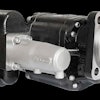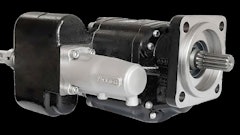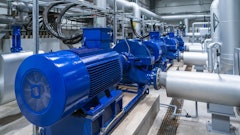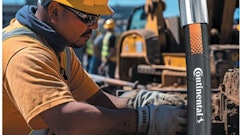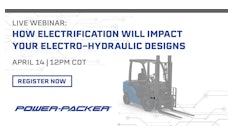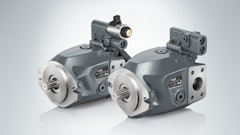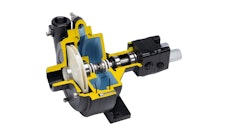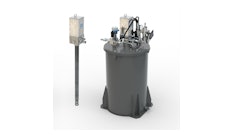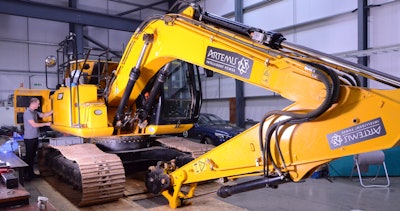
Based on the same technology at the heart of the world’s largest off-shore floating wind turbine, Artemis Intelligent Power announced the next step of a revolution in off-highway hydraulic machines, bringing unprecedented levels of efficiency and digital controllability.
Artemis is preparing to install Digital Displacement® pumps in a 16T excavator to demonstrate to major OEMs the fuel economy and productivity benefits of the technology.
With internal code name DEXTER, the program is being carried out with funding from Scottish Enterprise and will see the existing open-circuit pump replaced with a tandem Digital Displacement machine in a simple pump swap configuration.
Before and after comparisons based on standard trenching and loading cycles will be evaluated and energy savings and controllability will be key factors in the demonstration of benefits the technology can bring to the off-highway market.
Research and development of variable displacement pumps has converged on several common elements. For off-highway this is the swash-plate or the bent-axis type pump, the design fundamentals of which trace their roots back over a century. Digital Displacement is a completely new layout of variable hydraulic pump using solenoid valves to individually enable cylinders in the pump on a shaft turn by shaft turn basis.
Significant energy saving and control benefits can be realized along with improved diagnostics and integrated communications. Tapping into the idea of increasingly intelligent and connected machines (‘Industry 4.0’), Digital Displacement technology has created a hydraulic pump for the digital age. Its embedded controller constantly monitors cylinder performance and can automatically report system status changes. All data can be remotely accessed for monitoring and diagnostics.
The peak efficiency of a Digital Displacement pump converting mechanical power to fluid power is in the range of 93-97%. This is high but similar to conventional high quality bent-axis type pumps. What Digital Displacement® does differently is to handle part-load through the use of solenoid valves that control cylinder disabling. Each piston is protected by a check-valve that prevents system pressure from acting on the rotating group when that valve has not been activated. At the zero-flow, pressure-holding state, the complete rotating group is isolated from working pressure and the idle losses are approximately 1/10 those of a conventional hydraulic machine of the same size.
The pump is inherently digitally controlled and uses a dedicated controller to actuate valves in response to user demand. The timing and control of the valves is completely independent of shaft speed and output pressure, allowing for a high level of control optimization by the OEM user. Driveability and operator feel are key to the success of advanced products. Customized operating maps can be created allowing the pump control response to be tailored to individual market requirements or, for instance, to prioritize economy.
The Digital Displacement pump allows accurate control over engine load with the ability to prevent speed droop and stall. In the longer term, Digital Displacement technology offers a pathway to full hybrid functionality with energy recovery from slew or other axes and energy storage in hydraulic accumulators.
A typical Digital Displacement pump contains twelve cylinders which can each be considered as an independent pump under control of the master controller. A logical extension of this arrangement is that groups of three or four cylinders can be connected together within the pump end-plate to give multiple, totally independent services from a single pump. These services can be used to directly control separate pump loads each with their own pressure and flow control limits. This unique feature opens the way to direct control of actuators from the pump with the elimination of lossy external control valves. Within the off-highway market, this allows a single pump to control multiple independent loads.
In fully developed production applications, the Digital Displacement pump works with the engine controller to optimize transient response during load steps to minimize emissions and avoid stall.
Digital Displacement technology won the UK’s most prestigious award for technical innovation in 2015. Awarded by the Royal Academy of Engineering, the MacRobert Award recognized Artemis’s pioneering development and demonstration of a multi-megawatt transmission for the largest class of offshore wind turbines. The same technology from the most powerful hydraulic transmission ever built has now been launched in the industrial market and is rapidly moving into the off-highway market.
